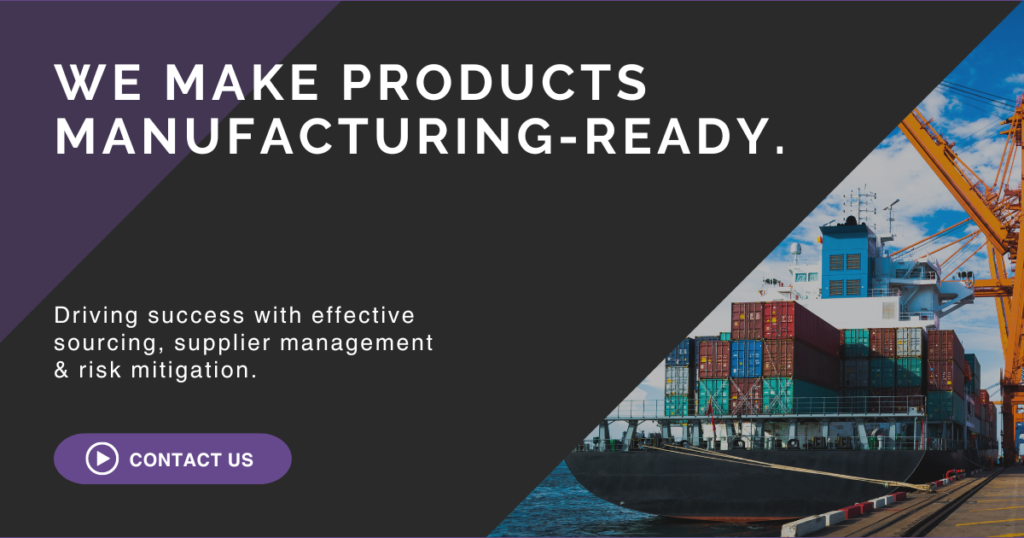Hardware Marathon: Installment 6
This post is the sixth in the series, “The Hardware Marathon.” In this series, I discuss the process involved in developing a hardware product from concept to production.
While our runner is busy running the marathon, we are going to take our first detour to look at one of the many parallel tasks that must happen for a successful production launch. Our marathon analogy breaks down a bit because our runner is focused on one thing, while in product development you need to be focused on many things and building a team to accomplish it all. This blog looks at a significant part of the team: building a supply chain.
Parallel Activities
To be adequately prepared for a successful launch into production several activities need to start during Alpha:
- Designing for manufacturing
- Finding custom component suppliers
- Identifying a contract manufacturer
- Designing production test
Each of these activities takes several months to complete and can be a development project on their own with schedules and milestones. The supply chain and production test activities may start during Alpha, but the bulk of the effort is typically during Beta with the goal to complete them no later than the end of Beta phase.
Setting up manufacturing could be done in-house or completely outsourced or some combination of the two. For this blog, we are assuming a fully outsourced model without the complications of setting up a factory from scratch while designing a new product.

DESIGNING WITH MANUFACTURING IN MIND
Before diving into designing the product in Alpha phase, it is important to determine which manufacturing processes are going to be used. The manufacturing process will guide design decisions and provide boundaries for what is possible in manufacturing. There is benefit in reviewing the design for preliminary feedback with potential manufacturers to ensure it can be fabricated.
A word of caution: there is a key difference between asking for design guidelines or feedback and giving a design to a supplier to be produced before it is ready for manufacturing. If you engage with a supplier too early and before the design is ready to be manufactured, there can be damage done to the relationship with the supplier.
where to begin on customized parts
Unless you are designing a product to only use readily available off-the-shelf materials, you are likely going to need some suppliers who make custom components that go into the assembly. Examples of these kinds of suppliers are:
- Plastic injection molding
- Electronics/ PCBAs
- Castings
- Sheet metal forming and welding
- Machining
- Painting or coatings
- Cable harnesses
- Die cut gaskets, adhesive tapes, foam inserts, or thermal pads
This is not an exhaustive list, but any item you need fabricated that isn’t readily available as off-the-shelf or through distribution will likely require a supplier that does customization.
It is easy to overlook items that are readily customized such as cutting shapes out of foam, gasket material, or even double-stick tape. By not having these items cut by a custom supplier, it allows for wide variation and potential defects on the production floor if there is any criticality to the size or shape of the item.
If you have electronics in your product, we recommend engaging with a contract manufacturer who will manage the supply chain, make your electronics, assemble everything together and test it before shipping to the customer or your 3rd party logistics locations. You won’t need contracts with all your suppliers, but it is likely necessary to have a contract in place with your contract manufacturer. We recommend reading and negotiating the contract instead of just simply signing it. The contract will establish the rules of engagement and disengagement. It is just as important to understand how you will do business together as it is to understand how you will stop doing business together. It is likely you will outgrow the first manufacturer that you first establish relationship.

Supplier rESEARCH
It may be a daunting task to find suppliers or manufacturers if you haven’t done this before. The process to find a supplier, much less one that will be good for your business, isn’t like shopping online. It can also be difficult to differentiate between actual suppliers and brokers or distributors. It can be further complicated if you desire manufacturing to be in a specific region. We want to caution just doing an internet search because, even to the experienced, there is a lot to wade through to determine what a company actually does and if it will efficiently achieve your goals.
One way to get around this unknown process is to ask for referrals from your connections. This approach may get you started, but don’t just stop with the first connection. You need to evaluate if this supplier is good for your business and product. Suppliers have niches they serve and it is important to determine if your product and business opportunity fits their niche.

tHE SELECTION PROCESS
We could spend an entire blog series discussing how to identify and qualify a manufacturer, but the process that Zebulon Solutions uses is 4 steps for each custom commodity:
- Research and identify possible suppliers from various sources including referrals and online industry catalogs. We recommend identifying 10-12 potential suppliers that meet your minimum requirements.
- Contact the supplier and request information from them. We call this process “RFI”, request for information, to understand how they compare to others as well as your product and business needs. After reviewing the information, select 5-7 to move to the next step.
- Create a “Request for Quote” (RFQ) by compiling your manufacturing documentation and writing a letter explaining the product and business needs. By providing the suppliers with all the same information you will be better able to compare their engagement with you and their manufacturing costs. We recommend establishing a due date for response and acknowledging this process could take nearly a month.
- Plan to visit 2-3 suppliers before making your final decision. On-site visits can confirm your impression and give you an opportunity to engage with the production staff. It is important to observe how they plan and execute against their production schedule and their approach to meeting quality standards.
Back to the marathon
Identifying and selecting suppliers will likely span the Alpha and Beta phases. More could be said about how to bring up suppliers, qualify tooling, and buy-off on manufacturing processes. At Zebulon Solutions, we work toward having custom parts available from production manufactures before we close out Beta activities. During Pilot, our goal is to qualify the contract manufacturer for production.
We’ve reached the end of our first detour with a solid plan for developing the supply chain. In our next blog, we rejoin our runner and look at what’s involved in Beta Phase.
